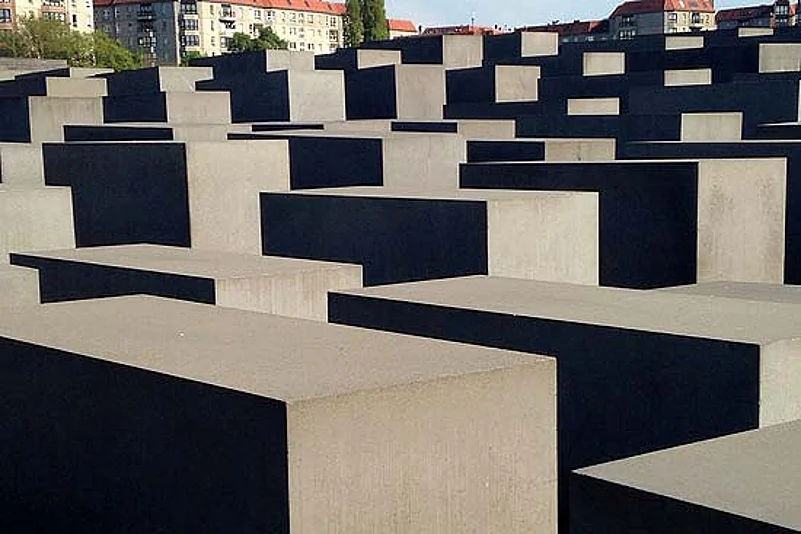The capital city of Germany is an artistic, historical, political and cultural haven. Gothic influence sculptures intermingling with powerful new-age street art is only one of its delicious cross-cultural ingenuities. Unfortunately, its impression around the world rarely reflects its rich heritage and society. The historical context that comes to the minds of most people at the mention of Berlin starts in the 1930s. As horrific and colossally brutal this past is, it doesn't paint the whole picture. Berlin, the street art Mecca of the urban alternative world and the birth city of electronic music, existed long before 1930.
If you were to close your eyes and think of the capital city of Germany, the image that pops into your head might be of a hardened flag painted in red, white, black and hatred. The image is never of the exquisite Renaissance water colour landscapes of Dürer and the harmonisation of detail in his portrayals of Hercules, nor of the classic manifestation of the Baroque era in the form of the grand Charlottenburg Palace. The refined sculptures, the unrefined, raw art, the delicate architecture — these are only the tip of Berlin's historically and culturally rich iceberg.
Berlin's historical belt might have a black notch, but it has gleaming ones as well. A shining illustration of its bright, rich history is its French Cathedral decorating the Eastern side of the Gendarmenmarkt square. This magnificent square is unarguably the most beautiful Berlin has to offer. Although destroyed in WWII and rebuilt as it stands today, the original French Cathedral was built between 1701 and 1705 for the Huguenots. The Huguenots were a branch of Protestants from France.
In 1685, King Louis XIV in France issued the Edict of Fountainbleu that revoked the right of Huguenots to practice their religion. This led to State persecution of these Protestants in the form of destruction of their churches, shutting down of their schools, and so forth. Following this, 6,000 French Protestants fled France in fear of intolerance and persecution, and were given asylum in Berlin by the Great Elector Friedrich III.
Berlin opened its arms to a wealth of French artists, poets, writers, philosophers — great men and women fleeing their homeland. This magnificent Cathedral stands testament to the warm and welcoming past of Berlin, who not only welcomed those in need, but built a Cathedral to give them a safe and beautiful place of worship.
The glowing history of Berlin may not be able to outshine the last 75 cloudy years. However, Berlin doesn't want that to happen. Berlin isn't looking for an escape route, a scapegoat or a quick-fix way to erase its mistakes and wipe the slate clean. No, Berlin as a city accepts its dark past, bows its head humbly, closes its eyes and delivers a heartfelt apology.
Advertisement

In a public square named Bebelplatz in the central Mitte district of Berlin lays an unusual sight. One corner of this cobble-stoned square has a large glass pane in the ground. Beneath the clear pane of glass one can see a library with pristine white bookshelves covering four walls, extending all around the room. Intriguingly, these shelves are empty. As curious tourists stare into the glass to figure out what this peculiar memorial could mean, Berlin has apologised for its past.
On May 10, 1933 several university students marched into Berlin's libraries and gathered books that were thought to be 'against the spirit of Germany' and contradictory to Nazi philosophy. This group, known as the Nationalist German Students Association, piled these 'filthy' books in the center of Bebelplatz and burnt the fine works of Freud, Einstein, Remarque and several more. This grotesque bonfire was commemorated by a roaring speech delivered by Propaganda Minister Joseph Goebbels who declared that, "Jewish intellectualism was dead."
Advertisement

Israeli sculptor Micha Ullman's Berlin Book-Burning Memorial displays an empty library whose shelves could accommodate the 20,000 treasures lost on that unfortunate day. At the other end of the Bebelplatz square is a placard nailed to the cobble-stone that reads (translated from German) "Where one burns books, one will soon burn people." — Heinrich Heine. Funnily enough, this quote is from Heine's play Almansor, written 112 years before the Bebelplatz tragedy.
The gravest mistake that Berlin apologises for is the one that has been scorched into history books with indelible ink. The Nazi atrocities that tortured and murdered millions of Jews, homosexuals, political dissidents, anarchists, 'asocial elements', Jehovah's witnesses, criminals and POWs can never be taken back or forgotten. However, they can be apologised for.
Berlin's Holocaust Memorial designed by architect Peter Eisenman and engineer Buro Happold is a nearly five acre square covered in 2,711 concrete slabs of varying sizes forming a grid. The ground of this square is slopping — a detail whose meaning many a tourist and local has speculated. This bizarre, abstract memorial is left open to interpretation. Some believe the concrete slabs represent gravestones, and the memorial is a tribute to the millions of lives lost. Another theory is that the flat, rectangular slabs all alike represent the faceless, nameless people stripped of their identity and humanity. This truly touching and unique memorial is another gesture on behalf of Berlin as a city to lay out its past out in the open, admit to all its wrongdoings and attempt to redeem itself.
The world can be a hateful, menacing place with war, murder, genocide and discrimination. History is engraved into the stones of time with a hammer and chisel, permanent. We know of countries hiding their true colours, covering up their past, lurking in the shadows of corruption and escaping their crimes. Hats off to a city that believes in an alternative by putting its ugly parts on display, and seeking forgiveness.
The author is a St. Xavier's college graduate, currently a features writer at homegrown.co.in, who lives to travel and explore new cultures and communities.



















